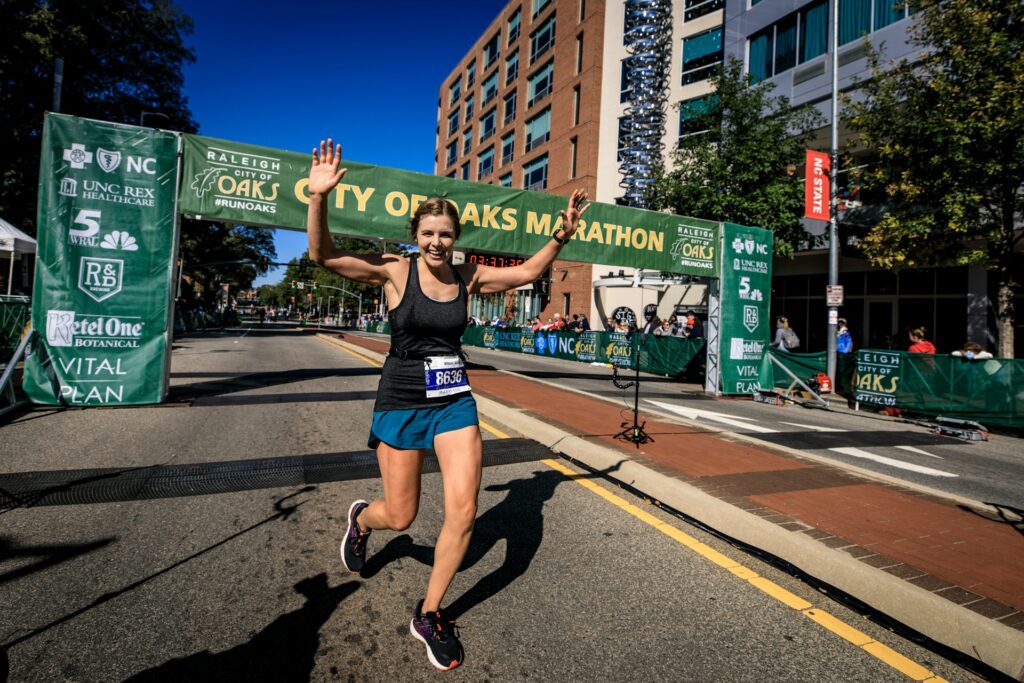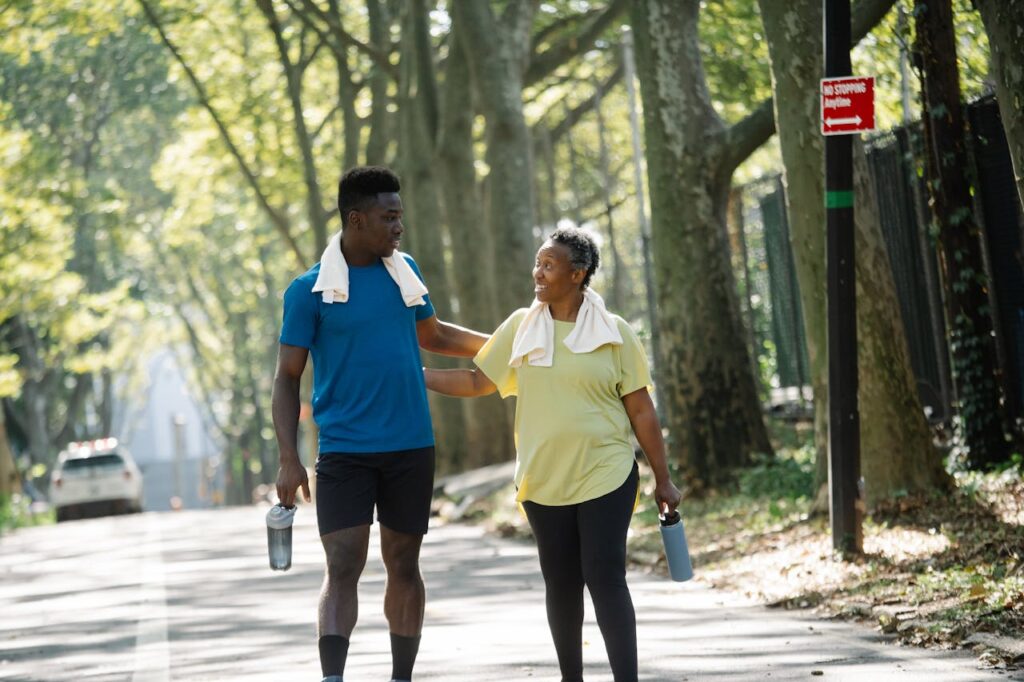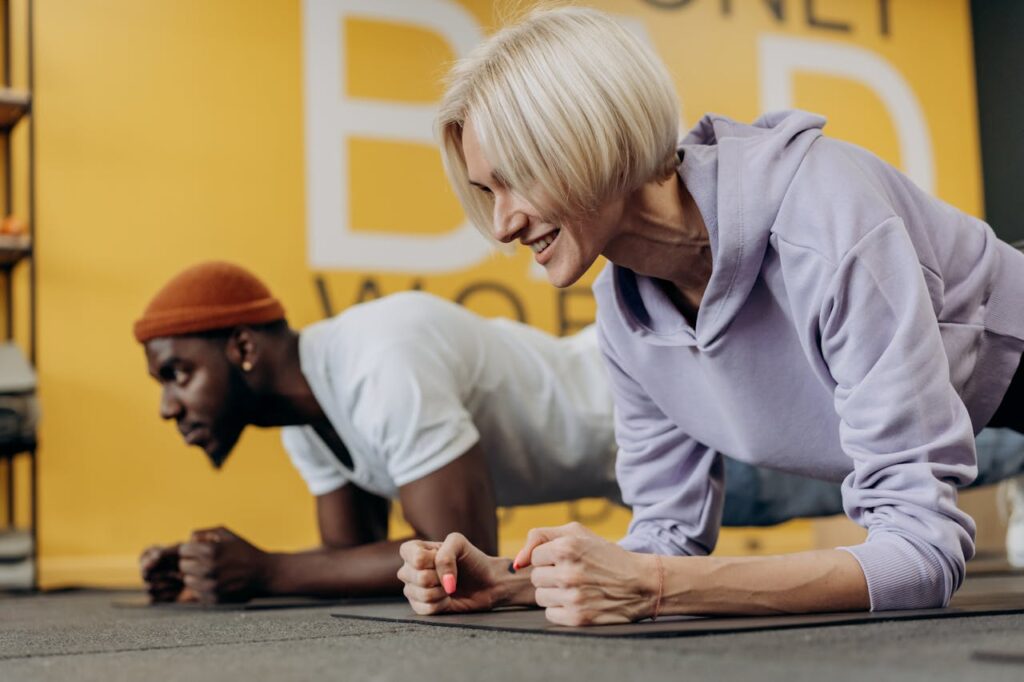Last month in my book club, we read the book Slow Productivity: The Lost Art of Accomplishment Without Burnout by Cal Newport. It came out at the beginning of this year (2024) and is already wildly popular. In fact, when I went to try to get it from the library, it had over 50 holds on it! I made it about halfway through the book before I realized there are SO many parallels to fitness in each chapter.
The book focuses on how our definition of productivity has changed as humans have changed. Newport discusses how we began productivity with foraging for food. Our jobs changed significantly with the development of agriculture, then even more significantly with the development of industry. In the modern era, many people are known as knowledge workers. Instead of doing physical labor, knowledge workers use their expertise and critical thinking skills to accomplish work. When it comes to knowledge work, productivity can no longer be quantified by how many crops you picked in a day or how many products you created on a factory assembly line.
Pseudo-Productivity
Slow Productivity starts off by talking about pseudo-productivity. We all know it! It’s when we’re trying to look busy to appease our bosses, but we’re not actually accomplishing much. Pseudo-productivity means doing lots of tasks, but many of those tasks don’t get you closer to your goals or make an impact on your work. Because busy-ness is prioritized over true needle-moving work and there are always more tasks to accomplish, people are burning out.
Newport brings up the “slow food” movement and how it spawned other “slow” movements. This trend became so popular because people want more intentional focus in their lives. People are searching for slower and more sustainable options for living their lives. He takes these ideas and runs with them, teaching throughout the book about how knowledge workers can work in a slower and more sustainable way.
Tenets of Slow Productivity
So, what does all this have to do with fitness? After the intro, Newport goes into the three main tenets of slow productivity. These are:
1. Do fewer things.
2. Work at a natural pace.
3. Obsess over quality.
I’m going to go through these three tenets and talk about how each one can relate to your workouts.

1. Do fewer things.
In our current society, it’s common to have a LOT going on. Always busy, always working on projects, multi-tasking, bio-hacking so you can be even more productive, etc. Slow Productivity is about taking away all (or most) of the busy-ness so you can focus on what really matters.
Thanks to the online world, there is a plethora of fitness information. Every day when you’re clicking around YouTube or scrolling TikTok, you see dozens of videos: “The one exercise you NEED.” “Stop doing this exercise and do this instead.” “Your perfect workout program.” You’re taking in all this information about what a workout plan is supposed to look like, and all of a sudden your workout is 50 exercises long. You’re stressing about how to fit in all those “perfect” exercises when you only have 30 minutes a day to prioritize fitness. It starts to feel too overwhelming, so you usually just ditch working out altogether.
It’s time to STOP.
Do fewer exercises.
We want to bring our workouts down to the needle-moving exercises. You can choose exercises per your goals, or you can start with trying to work the basic strength exercises into your week. Less is more when it comes to building a workout plan that gives you results.
Most people work out because they want to feel healthier and move better. You don’t need complex training plans and dozens of exercises to make that happen. A simple workout plan is almost always more effective when talking about living a more active life.
I regularly encourage my clients to start with a couple exercises per workout, even just 1-2 if working out consistently has been a big struggle for them. People fall off the workout bandwagon and burn out when they’re overwhelmed by trying to do everything. By choosing a couple exercises and focusing on doing them regularly, you’re more likely to stay consistent over time and see lifelong results. Doing fewer exercises = workout success.
Focus in on a goal.
The key work here is a goal, not many goals.
At any point in time, your workout plan should have one, maaaaaybe two training goals. Just like in life outside the gym, having lots of goals splits our attention. Multi-tasking has become the ultimate productivity hack, but it usually just takes away our focus from what matters.
Choose a training goal to focus on over the next few months and intentionally choose the exercises that will help you get there. This allows you to take away everything that doesn’t matter. Prioritize a deep focus on this one goal to achieve it. If your goal is to improve your strength, power, endurance, and balance, you probably won’t improve much at any of them. Focusing in also keeps you motivated! You have one purpose when you walk into the gym.
In this chapter, Newport also talks about putting things on autopilot when you can. When it comes to workouts, this could look like buying a program that will help you get to your goal instead of spending the time to make one yourself. You can also do the same workouts at the same time each week, so it becomes more like a ritual. Make it as easy as possible for yourself to show up and exercise.
2. Work at a natural pace.
When you’re thinking about living a healthier and more active life, you’re not thinking in days or weeks. You’re thinking in years! Fitness isn’t something that happens quickly- the results you get from workouts build over time.
I like to think about fitness as a lifetime AMRAP. AMRAP means “as many reps as possible,” and usually refers to doing a set of exercises as many times as you can during a workout. But when I think about a lifetime AMRAP, I’m thinking about getting in as many workouts (reps) as I can during my lifetime. This doesn’t mean working out every single day for the maximum number of workouts possible. Instead, it means I think about being active sustainably and long-term.
Every workout helps, of course, but thinking about exercising for a lifetime takes the immediate pressure away. In 10 years, will it matter if I skip a workout this week? No. I don’t have to squeeze it all in, or skip important things in my life due to workouts. This is the fitness way of working at a natural pace.
Think in Seasons
In Slow Productivity, Newport highlights many people we think of as productive or prolific. The stories we hear sometimes make these great people of history seem like an instant success. It makes us feel like things need to happen right now or something is wrong. Newport talks about how the stories of their accomplishments have been skewed though. Many times, their great works or discoveries were created over the course of years if not decades.
Newport tells these stories to highlight the true story- how they actually worked in seasons. They weren’t working intensely 24/7. Yes, they had seasons of moderate or even intense work. But they also had seasons where they took vacations, pursued other interests, and spent time simply resting.
You can apply these seasons to your workout plan. You can have seasons of intense exercising, especially leading up to a goal, but this needs to be countered with seasons of rest. On the flip side, it’s okay if regular workouts get put on the back burner for a season of your life. When thinking sustainably, it might not be the best choice to squeeze workouts into a stressful schedule and push toward burnout. You can always pick exercise back up in a few weeks or months when life is less stressful.
A common misconception in the fitness world is that you always need to be training at a high intensity, similar to how we’re always supposed to be ultra-productive at work. But our bodies can’t handle high-intensity workouts indefinitely. Working out intensely all the time is actually less effective than having different seasons in your training because of its negative impact on your body. They cause physical burnout, just like jobs with a high intensity cause mental burnout. Even competitive athletes have different seasons in their training because they know how important it is to balance their physical activity.
In the programs I write for my clients, there are periods of intense work to promote building strength. In between these, I also plan seasons of lower-intensity workouts. By creating sustainable workout plans with seasons, I’m helping my clients get stronger for the long-term. I teach them how to build strength but also give their bodies time to recover. My goal is to help my clients be active for a lifetime, not just while I’m working with them.
3. Obsess over quality.
Newport presents this tenet last because it’s the glue that holds slow productivity together. The whole idea of doing fewer things and working at a natural pace is to give you the space to obsess about quality. When you’re not rushing through everything and trying to be busy, you’re able to produce high-quality work.
Slow down, give yourself time to improve. In your workouts, this can look like:
- being intentional about your movements.
- choosing the weight you need, not the one you want.
- developing additional skills that help your workout performance.
- cross-training with other types of activity.
- pushing yourself towards one goal for a season.
Be Intentional
It’s very possible to power through your workouts and not think much about what you’re doing. You’re putting in the time, so you should see results, right? The problem with that is you lose a lot of muscle-building opportunity when you do so. The quality of your workout matters, and getting intentional is the way to maximize it. When you take the time to warm up your body, set up for each exercise, stay present during each rep, and help your body recover post-workout, you get stronger faster!
The Appropriate Weight
Sometimes the weight you want to use is not the weight you should be using. Fitness can bring out all the shoulds: “I should be stronger,” “I should be able to lift this weight,” “I should be keeping up with the person next to be.” The hardest part about your workout can be taking the ego out of it and choosing what’s actually best for you right now.
I talked about being intentional with exercise in the paragraph above. The right weight for you is the one that lets you be intentional and focus on how you’re moving. All of that intentionality goes away when you start trying to do too much before you’re ready. Focus on the quality of your movement, because that’s what will help you get stronger. Choose the weight that lets you do that.
Additional Skills
There’s a lot more to fitness than just pushing to lift heavier weights. Your muscles will get stronger with that method, but you’ll quickly reach a plateau. To get past that plateau and continue your growth, you have to obsess about improving all the skills that help your body become great at exercise. You can choose seasons where you work on these additional skills, or you can combine them with your typical training on the way to reaching your goal. Think about training balance and stability, mobility and joint health, proprioception and interoception, and full-body movement. By adding this supportive training, you’re helping your body become stronger all-over.
Cross-Training
Newport encourages studying in fields that are different from your own for better quality. This idea is similar to cross-training. Cross-training is doing other types of activity to help improve your main one. For example, a weightlifter might train for and participate in a 5k to help better their cardiovascular health. This might seem similar to the last one, but here’s the difference: additional skills can skill be trained within your workouts. Cross-training involves doing a completely different activity separate from your workouts. Think yoga vs. playing a sport or dancing vs. weightlifting.
Cross-training is popular because it helps you build skills outside of what you normally do. You might be surprised at how much a different activity can positively affect your workouts! It’s also great for your brain to try new things and be a beginner again.
Goals
This was mostly talked about in the other sections. By focusing in on one goal for a season, you can make huge strides toward achieving it. Because it’s your priority, you have the time and energy to make your efforts the best they can be. You have the motivation to keep pushing forward and your level of quality goes up.
Perfection
It’s important here to note that obsessing about quality does not mean aiming for perfection. Perfection is unreachable and traps you in the cycle of constantly pushing for more. That goes against everything we just talked about! Doing the best you can do means pushing yourself, but also recognizing where your limits are. Your quality work might look different than someone else’s, and that’s okay! Always aim for progress over perfection.
It can be inspiring to read about these tips, but the results come by taking action. If you have a workout plan, sit down with it and think about how you can incorporate these three slow productivity ideas. If you don’t have a workout plan yet, work on creating one or finding one that lets you work at your own pace and helps you achieve a goal in your life. Once you’re there, the only thing left to do is show up and put in the reps!
(Separately from your workouts, I definitely recommend reading Slow Productivity. There are a lot of good tips about creating a better relationship with work and productivity in general.)
If you want to get a taste of what strength training can feel like, try Strength Snippets! It’s a *free* five-day home workout email experience that helps you get stronger in just a few minutes every day and reframes your feelings about exercise from “bleurgh” to “ohhhh this could be something I actually like doing.”
You can ease into building strength at home without feeling like you have to do a whole workout—each Snippet only takes about five minutes each day! There might even be prizes for finishing all of them… Sign up for Strength Snippets right here!
Sarah Siertle
Hey! I'm Sarah!
I'm an inclusive strength & movement coach who helps people get hella strong so they can have fun and live their lives in full color!
My coaching is beginner-friendly, movement-based, and size-inclusive. I believe in coaching that is kind, not shaming or judgmental as so many fitness experiences are.
If you're ready to start your strength journey, you can check out your training options or get five days of five-minute workouts for free!


Comments